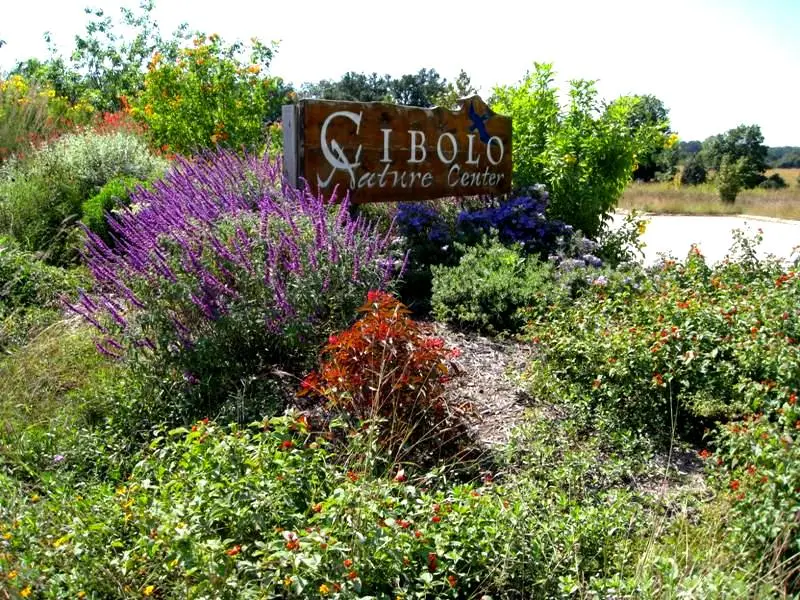Author: Bill Ward
It all started in the summer of 2000, when Rebecca Rogers and Judi Martin wondered why there wasn’t a garden club that focused on native plants. Rebecca contacted Nina Nye, because she heard Nina belonged to some sort of society for native plants. Nina sent her to me. At the time, Nina and my wife and I were members of the Fredericksburg Chapter of the Native Plant Society of Texas (NPSOT).
Rebecca phoned to say she and a few friends were interested in forming a club for native plants, and she wondered if I might have any ideas. I told her we might form a local chapter of NPSOT. However, I was uncertain whether we could generate enough interest to justify a Boerne Chapter. After all, there already were nearby chapters in San Antonio, Kerrville, and Fredericksburg.

We arranged to meet at the Cibolo Nature Center (CNC) to talk about the possibilities. I implored some fellow volunteers at CNC to come support me at this meeting with these ladies whom I perceived, rightly or wrongly, were coming to talk about a native-plant garden club. NPSOT is not a garden club!
Rebecca Rogers brought Judi Martin and Janet Doyle. Suzanne Young, Rebecca Yoder, Lee Knox, and I were waiting on the back porch at the CNC. These two groups hit it off immediately. It took only a few minutes to see we all were headed in the same direction.
Before that first meeting was over we had agreed to make a formal request to NPSOT for a Boerne Chapter, try to hold future meetings at the CNC, make the native grass inland seaoats the symbol of our future chapter, and hold a social event to test the community interest in having a local chapter of NPSOT.
The new chapter was officially approved in October of 2000, and we did get permission to hold meetings at the CNC. Being able to have meetings and other events at the Cibolo Nature Center has been a special boon to the Boerne Chapter, and we are the envy of other NPSOT chapters around the state for getting to associate ourselves with the CNC. We have tried to make this is a symbiotic relationship.
There was, indeed, sufficient interest for a NPSOT chapter in Boerne! The first Boerne Chapter meeting on October 4, 2000, brought out a big crowd, and in the following years the chapter grew to be one of the largest in the state.
Our chapter has been blessed not only with a substantial membership, but also with so many creative people who are willing to devote their time and energy. This chapter has never had to have the same person hold an office more than one term, because so many members are willing to be involved.
The Boerne Chapter has initiated some projects and programs that were new to the activities of NPSOT chapters. During Rebecca Rogers’ term as President of our chapter, she led us into a program eventually called Operation NICE! (Natives Instead of the Common Exotics!). Operation NICE! is designed to educate the general public about the virtues of using Texas native plants in place of the traditional exotic landscape plants. With the cooperation of the local nurseries and newspapers, Operation NICE! was a success. Hill Country African Violet and Nursery was the first nursery to sponsor this project.
The NICE! program was a major factor in the Boerne Chapter receiving the 2002 Chapter of the Year Award when the chapter was only two years old. Eventually NICE! was adopted by NPSOT as a state project.
During the fall of 2006, the Boerne Chapter started a ten-year project called Bigtooth Maples for Boerne, which gives away about 100 native maple trees every year to citizens, businesses, and organizations of Boerne. This community-service program is funded by a generous grant from the Lende Foundation. Maple trees are supplied by Baxter Adams of Medina. Suzanne Young, aka Maple Momma, organizes and administers the project.
Bigtooth Maples for Boerne was the chief reason the Boerne Chapter received the 2006 Chapter of the Year Award.
Another Boerne Chapter innovation was the SUN Award (Standing Up for Natives Award) begun in 2004. The first recipients were Bob and Dani Vollmer, who appeared before the Boerne City Council to successfully defend their landscaping with native grasses and other native plants. This led to changes in city ordinances that promote using water-saving lawn grasses.
A more recent Boerne Chapter program is Native Plant Watch, which gives money to local schools to promote projects that encourage students to learn about native plants.
From time to time during the first year or so of the Boerne Chapter, I wrote short articles about our activities in hopes we could get the newspapers to help us interest the public in the native-plant movement. I had no idea how to contact the papers about printing an article, but Rebecca Rogers had friends such as Kit Brenner at the newspapers. The papers published two or three articles, and then one day Rebecca called me and said, “You’ve got a column in the Hill Country Recorder, and I think tomorrow I can convince the Boerne Star to give you a column, too.”
My reply was, “What are you talking about? I’m a geologist. I don’t know anything about writing newspaper columns.” Rebecca was unmoved, “Oh, you can do it. It’ll be a great way to spread the word about NPSOT.” The first NPSOT column appeared in April 2002.
At the Boerne Chapter’s tenth-anniversary party last week, Kit Brenner and the Boerne Star received the SUN Award for the contribution they have made over the last eight years in educating the public about the virtues of landscaping with native plants and of protecting native-plant habitats. This NPSOT newspaper column has been crucial to the success of the Boerne Chapter.


